 I recently shared insight on why there is a strong need for corporate fitness and wellness resources for employees while they work remotely during COVID-19 closures and extended work-at-home models for many employers. After all, working from home was already a growing trend before the pandemic. The way organizations support a culture of well-being needs a broader reach now more than ever to help employees live well. While options to extend that reach may feel limited, there are a variety of creative and impactful ways to meet those needs.
I recently shared insight on why there is a strong need for corporate fitness and wellness resources for employees while they work remotely during COVID-19 closures and extended work-at-home models for many employers. After all, working from home was already a growing trend before the pandemic. The way organizations support a culture of well-being needs a broader reach now more than ever to help employees live well. While options to extend that reach may feel limited, there are a variety of creative and impactful ways to meet those needs.
One service solution NIFS launched for our corporate clients this summer was NIFS’ Personal Fitness Quest (PFQ). Employees signed up for this virtual program to connect weekly with their fitness specialist for complimentary personal training and coaching. Participants complete a pre- and post-assessment along with goal-setting as part of the program. When we asked our staff what their members want to achieve during their PFQ sessions, overwhelmingly employees were asking for accountability. Others had goals for easing back in after surgery and looking for more variety in their routine, but most people praised the program for the accountability it provided them.
Here’s what our fitness specialists are hearing:
“People are struggling with consistency in their routines, or lack thereof. They want someone to hold them accountable. Once engaged, the members have been thankful for the support.”
—Matthew, NIFS Manager, Indiana
“Our participants have struggled the most with prioritizing their workout and they’ve been lacking the motivation to get back on track with a fitness routine. Our participants really like having those weekly calls because that’s what keeps them accountable and they’re able to stay motivated.”
—Aislinn, NIFS Manager, Indiana
“The feedback for PFQ has been very positive. Members enjoy being able to connect with a fitness specialist weekly to keep them accountable and answer questions.”
—Jordan, NIFS Manager Pennsylvania
Here’s what our members are saying about their experience:
“PFQ is fantastic to be able to schedule a guided workout at a time that works with my schedule, and to have one-on-one direction and encouragement. It helps keep me motivated to work out and be ‘ready' for the next week. You did a great job of targeting the workout to what I wanted to improve.”
—PFQ Participant, Indiana
“I think you’re doing an awesome job virtually training! The process we have works really well for me, especially since you taught me some quick warm-ups in the first session outside. I only have positive feedback to share. Thanks for being flexible and creative to stay effective!”
—PFQ Participant, Indiana
The PFQ is one of many programs under NIFS’ virtual service model, HealthYou. HealthYou helps us provide a range of fitness and wellness services to employees of client locations without an onsite fitness center, or with a large demographic of employees who work remotely and have difficulty taking advantage of their fitness center. Group fitness classes, wellness programs like PFQ, and Healthy Lifestyle sessions from NIFS’ Registered Dietitian are all accessible with NIFS’ web-based tools; so while it may feel difficult to make an impact, NIFS helps you broaden your organization’s reach and connect your employees with the resources they need to live well.
This blog was written by Emily Davenport. To learn more about the NIFS bloggers, click here.


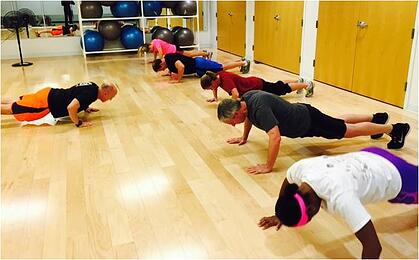 NIFS isn't the only agency that provides fitness management expertise to businesses. There are several like us because the market demands it. While many organizations have adopted a DIY attitude about managing their own fitness programs, an additional (and substantial) set of businesses has recognized the value in outsourcing fitness center management for their corporate fitness center or in their senior living community.
NIFS isn't the only agency that provides fitness management expertise to businesses. There are several like us because the market demands it. While many organizations have adopted a DIY attitude about managing their own fitness programs, an additional (and substantial) set of businesses has recognized the value in outsourcing fitness center management for their corporate fitness center or in their senior living community.
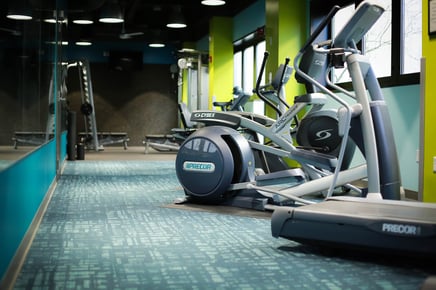 There are a variety of reasons for you, as a business owner, to set up a corporate fitness center for your employees; employee recruitment and retention are certainly among them. Increasingly, access to some form of
There are a variety of reasons for you, as a business owner, to set up a corporate fitness center for your employees; employee recruitment and retention are certainly among them. Increasingly, access to some form of 
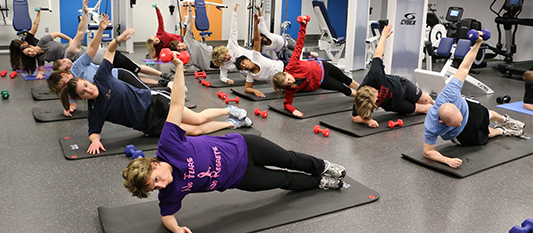
 Let me start by saying I’m not here to dog personal training. There is absolutely a niche for that fee-based service, and there is clearly a clientele for it. It should definitely remain an option in fitness centers.
Let me start by saying I’m not here to dog personal training. There is absolutely a niche for that fee-based service, and there is clearly a clientele for it. It should definitely remain an option in fitness centers. At NIFS, we work in both
At NIFS, we work in both 
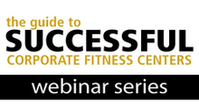


 In truth #1 of this four-part blog, I started to climb on my soapbox about measuring ROI in corporate wellness. (I’ll spare you the rant; you can
In truth #1 of this four-part blog, I started to climb on my soapbox about measuring ROI in corporate wellness. (I’ll spare you the rant; you can 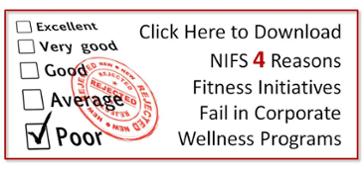
 Do you feel that you have to use machines or dumbbells to get a good strength workout? Well, it’s time to think outside of the box and incorporate resistance bands into your workout. In the past, bands were seen for older adults because they may not make you sore or you don’t feel they are as intense. Bands are great to throw in your bag or car while traveling because they don’t take up much space and aren’t near as heavy to carry around.
Do you feel that you have to use machines or dumbbells to get a good strength workout? Well, it’s time to think outside of the box and incorporate resistance bands into your workout. In the past, bands were seen for older adults because they may not make you sore or you don’t feel they are as intense. Bands are great to throw in your bag or car while traveling because they don’t take up much space and aren’t near as heavy to carry around.